True Bugs
The word 'bug' is often used broadly to indicate almost any insect or other invertebrate, but this is incorrect. The true bugs are members of the order Hemiptera - a word which means 'half-wing' and refers to the appearance of the wings of many species, which are half membranous and half solid. This is perhaps most easiest to see in the stink bugs and shield bugs. True bugs usually have sucking mouthparts which are drawn out into a needle-like stylus; this is often held tucked underneath the head when not in use. Bugs may be vegetarian and feed on plant sap (such as stink bugs, cicadas and aphids) or they may be carnivorous and suck the juices from other insects - or even larger animals (such as bed bugs and water striders).
This is a very large group with many thousands of species and it is only possible here to indicate some of the groups to the genus level, or even family, since identification to species may sometimes involve dissection under a microscope. Hemipteran bugs have a partial metamorphosis, so the young stages are not caterpillar like, but more often resemble smaller, wingless versions of the adults. Such young stages are known as nymphs.
(For a list of all Hemipteran bug species on the site, click here)
Use the photos below to narrow your search to a group of true bugs, then click on the picture to go to the next stage.
 |
Treehoppers
Treehoppers are easily overlooked as most species have evolved to look like parts of the plant on which they are feeding. Most species mimic thorns, leaf buds or other protuberances found on plant stems. They are usually found on the side of plant stems or on the underside of leaves.
|
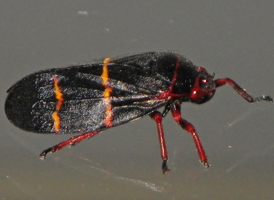 |
Spittlebugs
Small plantsucking insects that come in a variety of colors and are best distinguished by their shape. Spittlebugs tend to be short-nosed and have well-developed wings with hard cases. They closely resemble leafhoppers but are usually shorter and broader in shape.
|
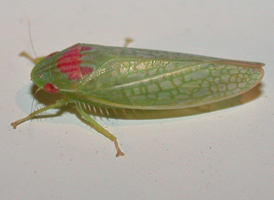 |
Leafhoppers
Small plantsucking insects that come in a variety of colors; many are plain green, but others can be surprisingly brightly-colored and the group is best told by its shape, with most species have a slender, long-winged appearance.
|
 |
Sharpshooters
These insects are closely related to leafhoppers and greatly resemble them, but adults tend to have a bulbous-headed look to them and many species have a speckled appearance.
|
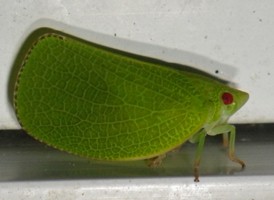 |
Leaf-like Planthoppers
Small plantsucking insects that are distinguished by their flattened, wedge-shaped appearance. They avoid detection by predators by resembling leaf buds. Most species are green or white in color.
|
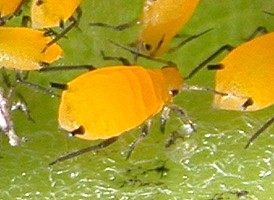 |
Aphids
Small to tiny plantsucking insects that may be found singly but are more often found feeding colonially on plant stems or the undersides of leaves. Both winged and wingless forms may be found but most are most readily told as aphids by the tube-like structures that stick out at the back like small 'exhaust pipes'. Most species are green in color but some may be yellow, white, black or reddish.
|
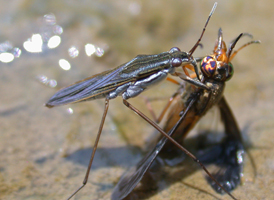 |
Water Striders and allies
Highly-adapted insects that have widely spread legs and live on the surface of water, skating around to feed on other insects.
|
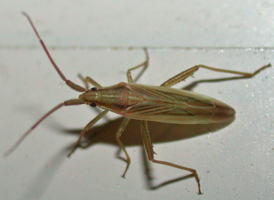 |
Mirid Bugs
An incredibly varied family of bugs which are usually small and rather slender. Mirid bugs are abundant and often found feeding at flowers during the summer. Mirids can be hard to differentiate from other small plant bugs but, with practice, they can be told by the presence of a triangular section towards the tip of the forewing that is known as the cuneus.
|
 |
Assassin Bugs
Small, green bugs that could be mistaken for grasshoppers or bush-crickets but can be told from them by the typical, needle-like mouthparts of a bug.
|
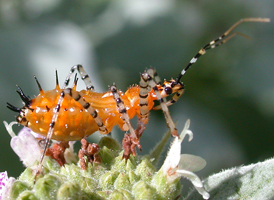 |
Assassin Bugs
Assassin bugs come in a wide range of colors and many of the nymphs are wingless and brightly-colored, often with strongly-striped legs and antennae.
|
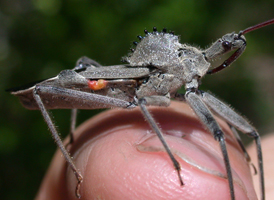 |
Assassin Bugs
Assassin bugs come in a wide range of colors but some are rather plain brown or gray. Some are large, chunky insects and the long, needle-like mouthparts that are carried tucked back under the head can look very intimidating.
|
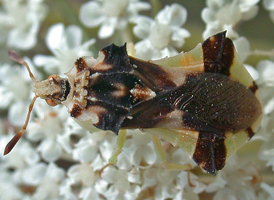 |
Ambush Bugs
A group of small, well-camouflaged insects that have frilly-edged bodies, designed to blend in among flowerheads, from where they lie in wait for their insect prey.
|
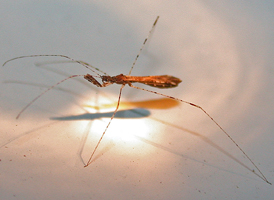 |
Thread-legged Bugs
Delicate insects with slender legs that look superficially like small daddy-long-legs or winter gnats. The structure of the antennae and front legs distinguish them as assassin bug allies.
|
 |
Seed Bugs
Medium to small bugs that are usually almond-shaped but otherwise very variable, with some species being dull brownish or grayish and others being brightly-colored. Most are seed-eaters.
|
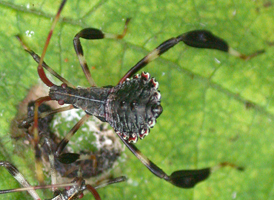 |
Leaf-footed Bugs
Medium to small bugs that loosely resemble narrow-bodied stink bugs and are most readily identified by the broad and flattened mid-segments to the hindlegs. Adults are winged, nymphs are not.
|
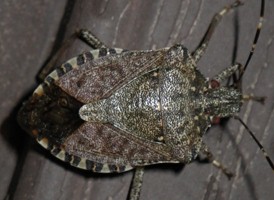 |
Stink Bugs and allies
Medium-sized, chunky insects that are readily told if handled, when they discharge a very unpleasant smell, designed to discourage predators. Also known as shield bugs, as the shape of many species is not unlike the shields used by knights of old. Most species are green, gray or brown and some species can be serious pests in gardens and on crops.
|
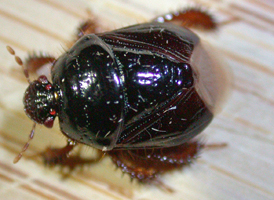 |
Burrowing Bugs
A peculiar group of bugs that could easily be mistaken for beetles, due to their dark, shiny appearance and stout legs. However, note the pale, membraneous lower half to the wings which show these to be true bugs.
|
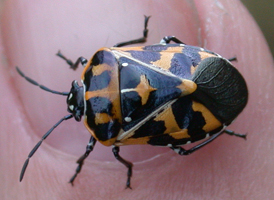 |
Stink Bugs and allies
Medium-sized, chunky insects that are readily told if handled, when they discharge a very unpleasant smell, designed to discourage predators. Also known as shield bugs, as the shape of many species is not unlike the shields used by knights of old. Most species are green, gray or brown but some can be richly colored in red, orange or yellow.
|